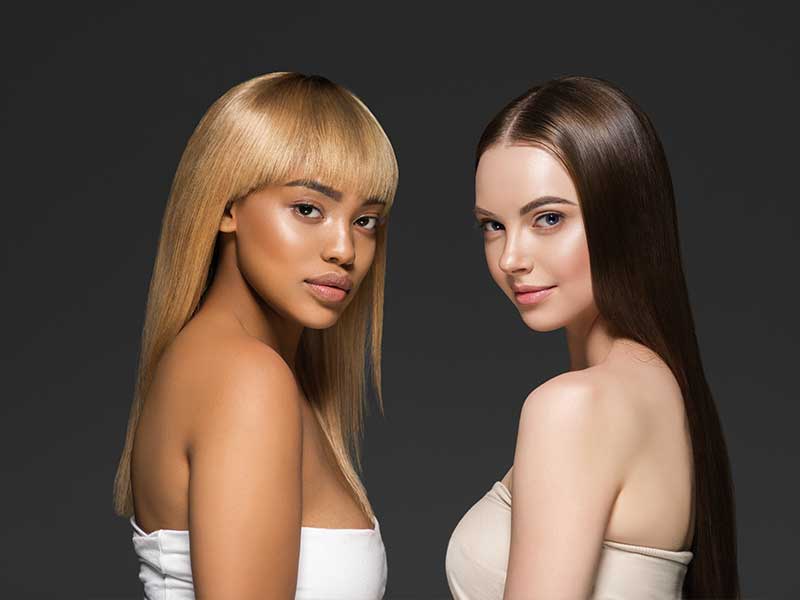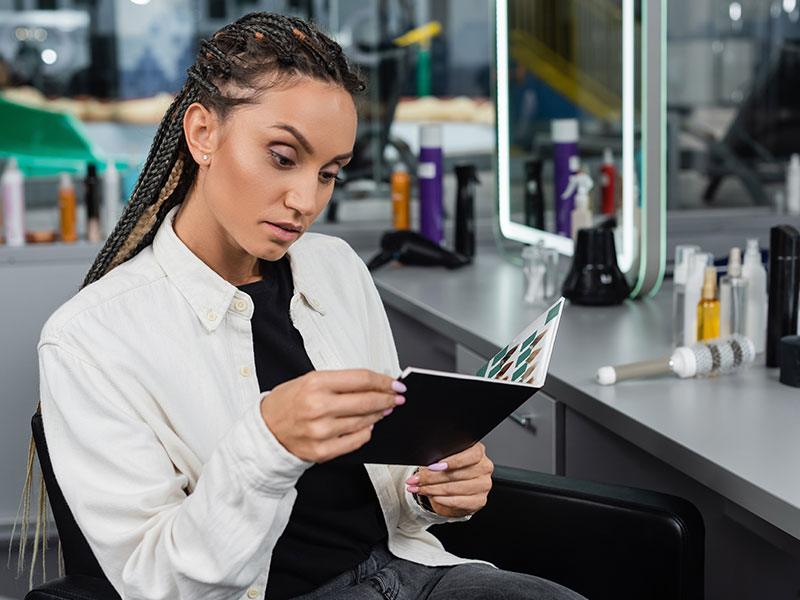
Relaxers vs. Texturizers: Choosing Your Path to Effortless Elegance
December 18, 2023
New Year, New You: Unbelievable Wig Blowout Sale!
January 19, 2024Dreadlocks: a hairstyle steeped in history, rich in cultural significance, and bursting with artistic expression. For centuries, dreadlocks have captivated the imagination and adorned the heads of people across the globe, transcending borders and societal norms. In this exploration of dreadlocks, we delve into the heart of what makes this style more than just a fashion statement. Dreadlocks are a testament to the versatility and beauty of hair, an emblem of cultural identity, and a canvas for personal expression. Whether tightly coiled or freely flowing, each lock tells a story, weaving a narrative that resonates with individuality and heritage.
Historical Roots of Dreadlocks
The history of dreadlocks is as tangled and intricate as the locks themselves. Spanning various continents and cultures, dreadlocks have been a part of human history for millennia. In ancient Egypt, mummies have been discovered with dreadlocks still intact, a testament to the style’s longevity. Moving across to India, dreadlocks have been worn by holy men and women, known as Sadhus, symbolizing their spiritual detachment from the material world.
In Africa, dreadlocks have been worn for centuries, carrying deep cultural and spiritual significance. Various tribes across the continent have embraced dreadlocks, each imbuing them with distinct meanings. The Maasai warriors of Kenya, for instance, are known for their thin, red dreadlocks, dyed with root extracts and red ochre.
Even in the early Western civilizations, there are accounts of ascetics and mystics wearing dreadlocks, often as a symbol of their renunciation of worldly vanity and materialism. This historical journey across the world highlights not just the geographical spread of dreadlocks but also their deep-rooted significance in various cultures, symbolizing everything from spiritual devotion and political statement to fashion and artistic flair.
The Process of Creating Dreadlocks
Creating dreadlocks is an art form, a process that transforms individual hair strands into a cohesive, matted or knotted structure. There are several methods to begin this journey, each suitable for different hair types and personal preferences. The backcombing method involves teasing the hair back towards the scalp, creating tangles that eventually form locks. Twisting, another popular technique, is often used for tighter hair textures, where hair is methodically twisted into coils. Then there’s the freeform approach, where hair is allowed to naturally mat and lock over time, often resulting in unique and varied patterns. An important consideration in the dread locking process is hair texture. Coarser, curlier hair tends to lock more easily, while straighter hair may require more maintenance and time to achieve the desired dreadlocked look. Regardless of the method or hair type, patience is a key virtue in the journey to developing mature dreadlocks.
Maintaining Healthy Dreadlocks
Contrary to some misconceptions, maintaining dreadlocks requires dedication and proper hair care routines to ensure scalp health and the integrity of the locks. Caring for dreadlocks is a journey that involves more than just aesthetic upkeep; it’s about ensuring the overall health and longevity of your locks. Here’s a breakdown of the essential aspects of dreadlock maintenance:
Regular Washing
Keeping your dreadlocks and scalp clean is fundamental. Use a residue-free shampoo to prevent buildup and ensure that your scalp remains healthy. Washing your locks every 1-2 weeks is generally recommended, but this can vary based on your hair and lifestyle.
Moisturizing and Hydrating
Dreadlocks, like all hair, need moisture to stay healthy. Dry dreadlocks are prone to brittleness and breakage. Light oils like jojoba or coconut oil can be applied to the length of the locks to keep them supple, while water-based sprays or leave-in conditioners can maintain hydration without causing buildup.
Re-Twisting and Root Care
To maintain their form and incorporate new growth, dreadlocks need to be re-twisted or palm-rolled regularly. However, be cautious not to overdo it as excessive re-twisting can lead to thinning and breakage at the roots.
Nighttime Care
Protecting your dreadlocks at night is crucial to prevent tangling and frizz. A silk or satin scarf or pillowcase can reduce friction and help maintain the integrity of your locks.
Protecting from Damage
External elements like sun, chlorine, and salt can be harsh on your locks. When swimming, wearing a cap and rinsing hair afterward, or applying a UV protectant spray when in the sun, can help in protecting your dreadlocks from environmental damage.
Each of these steps plays a vital role in maintaining not just the appearance of dreadlocks but their health and vitality as well.
Styling and Personalizing Dreadlocks
Dreadlocks are not just a hairstyle; they’re a canvas for personal expression. One of the most exciting aspects of having dreadlocks is the vast array of styling options available. Dreadlocks can be worn long or short, dyed in various colors, and adorned with beads, shells, and rings for a unique look. Styles like updos, buns, and ponytails take on a new dimension with dreadlocks. For those looking to add an extra flair, dreadlock extensions can offer additional length and volume. Personalizing your dreadlocks is about showcasing your individuality and creativity. Whether you prefer a more traditional look or something edgy and bold, dreadlocks offer the flexibility to express your personal style in a way that’s uniquely you.
Dreadlocks in Modern Fashion and Culture
Dreadlocks have transcended their traditional roots to become a statement of fashion and individuality in modern culture. Today, they are celebrated for their versatility and uniqueness in the fashion world, gracing runways, magazines, and streets alike. Beyond fashion, dreadlocks hold a strong presence in various cultural movements, often symbolizing a break from conventional norms and a celebration of natural beauty. In music, film, and art, dreadlocks have become a symbol of self-expression and freedom. This hairstyle continues to inspire and empower individuals to embrace their natural hair and find beauty in authenticity. As dreadlocks evolve within modern culture, they carry with them a rich history and continue to be a powerful expression of identity.
Challenges and Misconceptions
Misconception 1: Dreadlocks Are Unhygienic
A common but false belief is that dreadlocks are unclean. In reality, dreadlocks require careful and regular cleansing routines. The misconception often stems from a lack of understanding of the locking process and maintenance.
Misconception 2: Dreadlocks Limit Professionalism
There’s an outdated notion that dreadlocks aren’t suitable for professional environments. This stereotype is rooted in cultural biases and does not reflect the diverse and creative ways in which dreadlocks can be styled and maintained for any setting.
Misconception 3: Dreadlocks Are Always Permanent
Many believe that once you opt for dreadlocks, the only way to remove them is to cut your hair. While it’s a commitment, with patience and the right technique, dreadlocks can be carefully detangled without drastic measures.
Misconception 4: Dreadlocks Are Painful or Damaging
Some assume that creating and maintaining dreadlocks is painful or harmful to the scalp. While tight styles can cause tension, properly managed dreadlocks are formed with techniques that protect the hair and scalp.
Dreadlocks as a Lifestyle Choice
Embracing the Dreadlock Journey
- Cultural and Personal Significance: For many, dreadlocks are more than a hairstyle. They’re an expression of cultural heritage, spiritual beliefs, or personal identity.
- Commitment and Adaptation: Adopting dreadlocks often means adapting to a new hair care routine and embracing a unique journey of hair expression.
Dreadlocks and Identity
- Expression of Individuality: Dreadlocks can be a powerful statement of individuality, allowing wearers to break free from conventional norms.
- Connection to Heritage: In many cultures, dreadlocks are a connection to heritage and history, worn with pride and respect.
Conclusion
Dreadlocks are more than just a hairstyle; they are a testament to the diversity and creativity of hair expression. Throughout this exploration, we’ve unveiled the art and beauty of dreadlocks, demystified common misconceptions, and highlighted their cultural and personal significance. The journey of maintaining dreadlocks may be filled with challenges, but it’s also replete with rewards – a journey of self-discovery, personal expression, and connection to cultural roots.
As we close this chapter on dreadlocks, it’s important to remember that embracing this style is about more than just changing your appearance; it’s about embracing a part of yourself and, for many, a part of your heritage. Whether you wear dreadlocks as a symbol of your cultural identity, a statement of personal style, or as a spiritual commitment, they are a powerful expression of individuality and beauty.
About the Author
As Owner and a professional at Trendsetter Hair Clinic, I’ve had the privilege of working with diverse hair types, texture and styles, including dreadlocks. My passion lies in helping individuals find and express their unique beauty, and in educating about the varied and rich aspects of hair care and styling. Through this article and my work at the clinic, I aim to celebrate the diversity of hair and to encourage everyone to embrace and love their natural, unique beauty.




